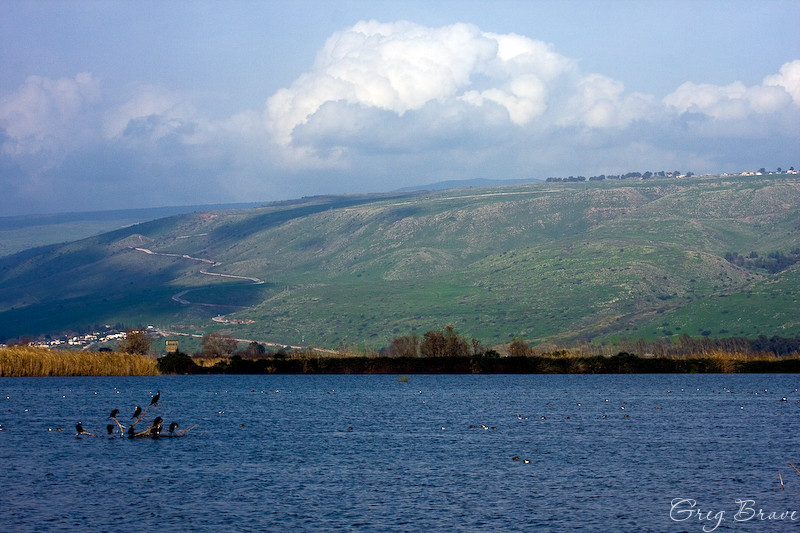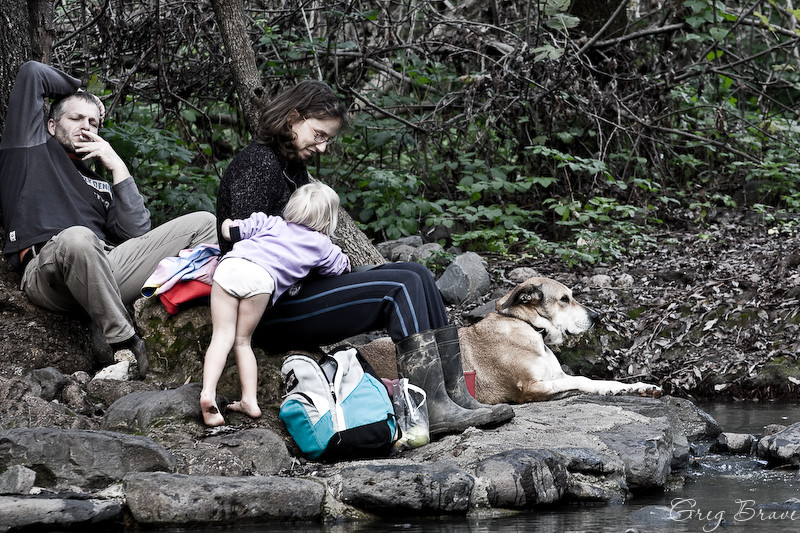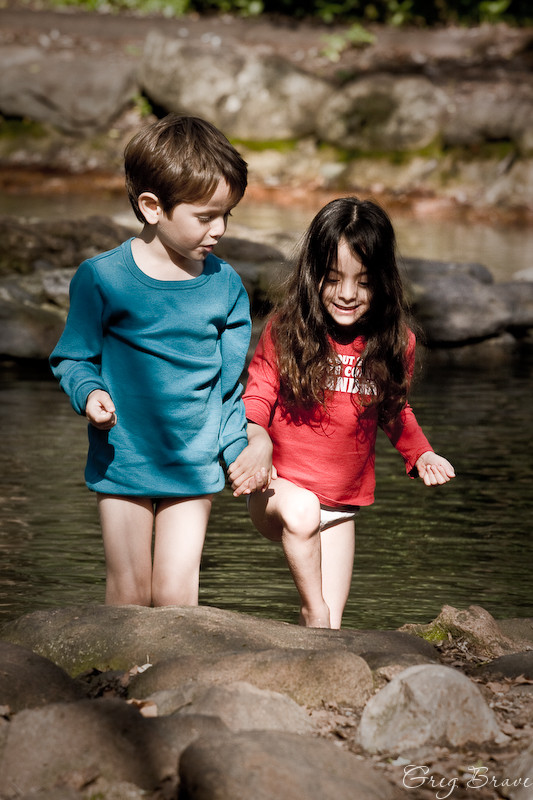My friend had a trip to the US, and I used this opportunity to get me this great Canon lens, which I have been dreaming about for quite some time!
As you might have already guessed this is a Canon 70-200 f4 L-series lens. This is the cheapest one from this line of Canon lenses, f4, without image stabilizer. I bought it at B&H for about 630USD and had it shipped to the address my friend was staying at.
The telephoto lens I used before was Canon 75-300 f4-5.6 III USM, given to me as a present. I have enjoyed that lens for about two years, but eventually its lack of sharpness and overall image quality comparing to my other lenses started to bother me a great deal. After doing a little research, I came up with this Canon 70-200 f4 L lens. After reading tons of reviews and watching photos made with this lens I was convinced that it had very good sharpness and image quality, and though I was loosing a 200 to 300 mm range compared to my old lens, I decided to go for it.
There are also much more expensive variations of this lens – f4 with image stabilizer, which goes at B&H at about 1200USD (!!!) and there is also Canon 70-200 f2.8 IS L (1800USD). All these models are far beyond my financial capability, but I have to say that even if I could afford them, I am not sure at all that I would buy them.
This is something that has to be explained. When you look for a lens, first of all you ask yourself what are you going to shoot with it? In my case it is landscapes, portraits, and studio photography.
- When I shoot landscapes I mostly use a tripod anyway, so I don’t need that additional f-stop for quicker shutter speeds. In addition when shooting landscapes smaller apertures are used anyway.
- When I shoot portraits and studio, I either do it in daylight, which is bright enough for f4, or I use flashes, and their power and position can also be adjusted for working with f4 and smaller apertures.
- The more expensive Canon 70-200 models have also one disadvantage – weight: the f2.8 IS model weights about one 1.5 kilos (!) and the f4 IS model weights 760 gr, while f4 without image stabilizer (the one that I bought) weights 700 gr. The weight is very important when you are hiking with your photo gear, and also when you are holding camera in your hand for a long time.
As you can see currently I have no real need for the more expensive models, but what is important that Canon 70-200 f4 L – is an L-series lens, which means that it has L-series optical components, and the image quality it produces is the same (if not better due to its simpler build) as its more expensive modifications.
You might ask “but who does need those expensive models?”. Well I can think of a few reasons – for example birds photographers really need that lens-speed, or indoor sports photographers – there are many occasions in which they can’t use flashes, but have to shoot quickly moving subjects.
Enough about my choices. What about the lens itself? I will not write a full review here, at least not just yet, but I will share my first impression with you.
I am very happy with it. The build quality is superb, the lens sits good in my hand and the focus ring is very comfortable. The image quality is top-notch. The sharpness is the best I had so far, and the colors are stunning. This lens looks heavier and bulkier than it actually is, and it comes with its own original lens hood. The focusing process is almost silent and pretty quick. One disadvantage of this lens is that its filter size is 67mm and not 77mm like most of the L-series lenses, so I will have to buy an additional polarizing filter for it.
Enough words for this post, here are a couple of photos I made using the Canon 70-200 f4 L lens, and as always comments and critiques are welcome!
Ahula Reserve . Photograph by Greg Brave. Click on the photo to enlarge.
Family Vacation. Photograph by Greg Brave. Click on the photo to enlarge.
Watch Your Step… Photograph by Greg Brave. Click on the photo to enlarge.










I love my 70-200 f4L (non-IS). It was my first L lens and the images it produces are wonderful. Super sharp and quick to the focus. It got a huge work out last fall shooting youth football. It was very much up to the task. At one point I even used it for youth basketball. A f4 lens for indoor sports? Yes! Of course I was using strobes to light and then ramped the ISO up to 1000 and it was perfectly fine. A little tight for under the net, but backed off to the corners it made some really nice images. The lens I use for Bball now is the 24-70 f2.8L, now that’s a great basketball lens!
Youth soccer starts this week and I’ll be using my trusty 70-200 f4L for that too. A great lens!
Gordon,
I absolutely agree with you that it is a great lens. I think it gives the best value for its price and its weight.
I have been considering which of the two f4 70-200 lenses to buy (IS or non-IS). I have the canon 100mm macro (non-IS) and I find the camera shake frustrating. I have decided to go for the IS 70-200, a little more expensive but I am sure it will be worth it in the end!
It’s one of very few L series lenses that I have been prepared to buy with my own money. It’s genuinely good value, which can’t be applied to many of the others, yet its optical quality is just about as good as it gets among zooms. The 67mm filter size is an advantage rather than a disadvantage.
Agree with you on everything, just one question though – why do you count the 67mm filter size as an advantage?
Three simple reasons for me:
Cheaper filters.
It’s more common in other lenses, in my experience.
If there is a difference among your lenses, a smaller lens thread is preferable, because of step-down rings.
It would also be an advantage for slot-in filters if vignetting occurs, but that is much more relevant to wide focal lengths, of course.
How hand holdable is it? I would like to use it for longer focal length candids, I have a tripod but don’t take it everywhere with me. It will mainly be an outdoor lens so relatively reasonable light. Has anyone compared it to the new Tamron 70-300 VC?
It is very “hand holdable” in my opinion. It is light compared to it’s f2.8 bigger brother, and if you have enough light and happy to use f4 and higher, its image quality is practically the same.
Thankyou, do you find it useable indoors with a speedlite to help freeze motion? High have a 60D so I should be able to bump the iso relatively high to try to obtain a hand holdable shutter speed? I understand it is an outdoor lens mainly but i don’t want to rule out being able to use it indoors.
Well, it is not an “outdoor lens” at all 🙂 it just has an f4.0. Remember that f2.8 also comes with its limitations of shallow depth of field.
Using speedlite will most definitely help, and you don’t even have to use it on full power. Indoors, something like f5.6 with canon ex430 speedlite used on manual 1/4th of its power, ISO 400 should work just fine.
Just remember that it is a big lens, so try not to point your speedlite straight with the lens (you might get a shadow of the lens hood in your images). Bounce your light from the ceiling and walls instead.
Hope this helps!
Do you find you need to use 1/200 or above to prevent camera shake? how do you find it for outdoor candids wide open?
Vicky, yes. Especially when I use it at its long edge (200mm) I go for the highest shutter speed I can. Also keep in mind that telephoto lenses have very shallow depth of field to start with, and it gets shallower as you open up your aperture. Therefore when shooting with 200mm at f4 you need to have this in mind and focus carefully.
So I am maybe going to struggle a bit at 200mm if I need to stop down to say f8? Indoors I imagine I would only use much shorter focal lengths ie up to 100mm, I really need to think about its main uses. I am wondering ie at 200mm what I loose in aperture with e.g the tamron 70-300 VC I will gain more with VC ie being able to use slower shutter speeds for non moving subjects. I think the Tamron is f5 at 200mm in comparison but it suggests you gain at least 3 stops with the VC.
Indoors, with this lens, I would really suggest using a flash. I am not familiar with the tamron 70-300, but from its range, and knowing the canon 70-200, I would say Tamron’s lens image quality would be significantly lower than Canons (don’t forget, we are talking about L series lens! 🙂 )
I wouldn’t count on 3 stops though…
Hi, (fellow) Greg,
I am seriously looking into this lens, for his portability, constant aperture, etc. I will need it to be a jack-of-all-trades–nature, architecture, portraits, outdoor sports. However, both my kids play ice hockey, and my question is, could this be used?? I currently have a 60D and the kit 18-135 F3.5-5.6 IS. I’ve used it at the rink, but as you would predict, I get a poor hit rate. I just need something a bit faster, a bit longer, and something I could also bring with me anywhere. This seems like the best option, but I really wanted to know what you thought about the hockey issue and if there was another option I should look into.
Thanks for your thoughts!
Greg